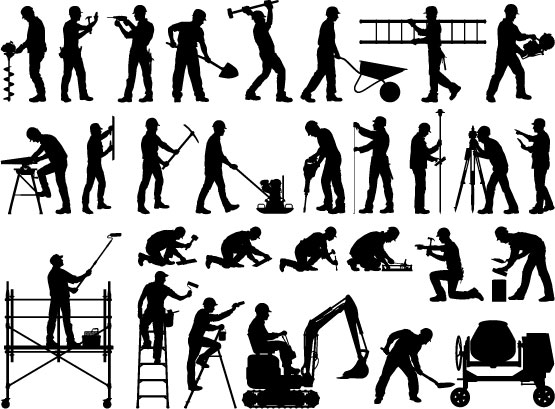The Construction Labor Shortages Direct Impact on Home Buyers


Now is the time that prospective home buyers that are going to build their new home this year are getting serious about starting the process. One of the obvious drivers increasing demand this year is the rise in interest rates. Recent home sales statistics show that existing home sales have surged citing interest rates as the primary driver. The bigger threat to cost and availability of new homes for homeowners isn’t even on most home buyers RADAR. It’s the severe shortage of construction workers. This single issue is now causing home cost increases and delays in construction across the country.
What Happened?
Movies have been made about it, books have been written about it, and just about everyone has been impacted by it in one way or another. Housing, both the construction of it and the financing for it, was a big driver of the Great Recession. At its worst period, the time-frame between 2007 and 2011, about 2 million skilled construction workers left the industry. They didn’t just take a break or do something else temporarily. They either retrained and took up another profession or they just plain retired, never to return to the construction workforce.
On top of that, the construction industry has become an aging workforce. The average age of a construction worker, according to the National Association of Home Builders (NAHB) is 47 years old. In another NAHB survey “Young Adults and the Construction Trade” many of the respondents said there is no or little chance they would work in the trades. They attributed it to wanting a less physically-demanding job and to the notion that construction work is difficult.
All of this couldn’t be coming at a worse time. More than half of the total construction workforce is over 35, with more than a third – close to 3 million workers overall – nearing retirement age. The construction workforce under the age of 35 might be enough to replace all those retiring workers alone, but BLS data also predicts the construction sector will grow by nearly 15% – adding 800k new jobs – through 2024. Where are they going to come from and what happens if we don’t find them?
The Impact on New Home Construction
The construction industry is already feeling the results of the lack of labor in the field. The inability to staff construction jobs, the increased wages that have to be paid to attract workers, and reduced or missing skills set that the workers hired actually possess. These are the issues that virtually every home builder in the country is facing today. How does it impact you and your new home?
Getting contractors to call back – The lack of available workers means that almost every contractor is busy. Good contractors are so busy they can’t field the calls when prospective new customers call. They are already busy doing estimates and quotes and doing the work they already have. They are booked ahead for months or maybe even the year. It frustrates home buyers to not get a call back from good home builders, however, they just don’t have the staff to take the calls.
RELATED: WHY BUILDING OUTSIDE CAN COST MORE
Skilled workers versus unskilled workers – Just because there is a lack of skilled workers doesn’t mean that the work that requires skills goes away. Home builders have to build the homes they have under contract. What this means is that unskilled workers are being hired to fill skilled work positions. While apprenticeship programs and on the job training have played important roles in the training of the skilled construction workforce in the past, things are different now. Those programs are supervised with skilled craftsmen training the new workers in their positions. Today, unskilled labor is being hired to do skilled work resulting in reduced quality and poorly built homes.
Timeframe Build – When a builder typically has a crew of 5 to work on a house and can only keep 3 on staff, what happens? It takes longer to build a home. It’s not just the builder and his direct employees. This impacts every trade and subcontractor. The plumber, the electrician, the foundation subcontractor, the siding subcontractor, etc. Construction scheduling is critical to the successful completion of a custom home. When the lack of available labor impacts every trade and subcontractor, the result is a longer timeframe to complete new home projects.
Increased Cost – To get skilled craftsman, builders have to pay more today. The alternative is to hire unskilled labor and then pay for rework. In either case, the cost of labor is increasing. When the builder’s costs go up, the cost of building a custom home goes up. This directly impacts the home buyers’ price when they build their new home.
How Off-site Construction Helps
 In the construction industry, the skills and labor shortages are hitting hard. This single issue could be the driving force creating permanent and decisive changes in how custom home builders do business and meet demands.
In the construction industry, the skills and labor shortages are hitting hard. This single issue could be the driving force creating permanent and decisive changes in how custom home builders do business and meet demands.
Building Offsite helps eliminate many of the issues that exist today for custom home builders. It does this in several ways:
Turns the construction process into a manufacturing process – This means that unskilled labor can be trained to perform tasks in factory. These tasks are done by the same workers every day as part of a repetitive process that is overseen by supervisors and checked by inspectors.
Reduces Costs – Concentrating the construction of so many homes in one location reduces the cost for material through better buying power, reduces waste, and allows better overall management of resources.
Shorter Build Timeframes – Factory construction means schedules are controlled and managed. Just like an assembly line, materials are ordered and resources are scheduled to smoothly products in a consistent and timely manner.
Worker’s Paycheck’s Don’t Depend on the Weather – One of the downfalls of working outdoors is that weather can impact a paycheck. Rain or adverse weather could mean that workers only earn paychecks for 2 or 3 days in a week because they were unable to work a full 5 days. Building indoors removes the instability from a construction workers life.
Modular Construction Offers Home Buyers Better Custom Homes
The labor shortage is here to stay. Custom home builders across the country are struggling to meet demand. Home buyers are frustrated with the increasing cost and the inability to build new homes in a timely manner. Modular homes offer the ability to mitigate many of the issues home buyers and home builders are facing today. In addition, the modular construction process just builds better homes. Modular offers the solution to the labor shortage today!
The post The Construction Labor Shortages Direct Impact on Home Buyers appeared first on Impresa Modular.




